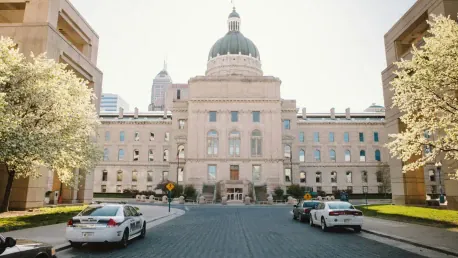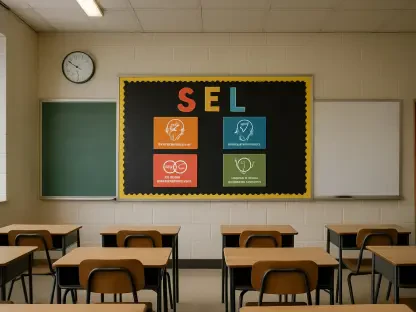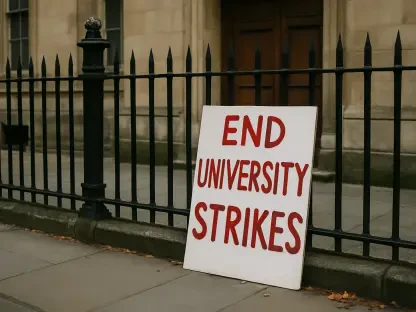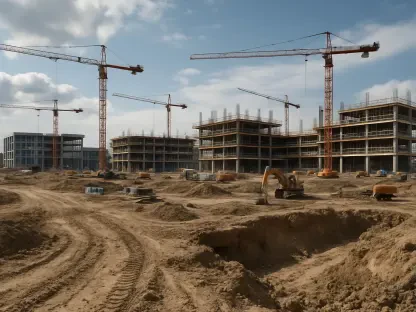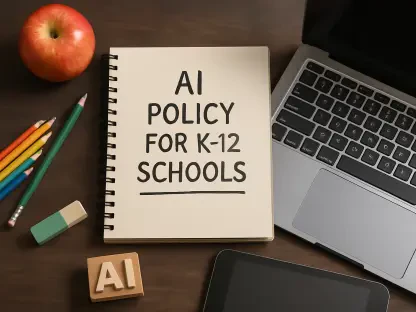The recent protest at the Indiana Statehouse served as a stark manifestation of the growing discontent among students, parents, and educators over the state’s proposed property tax relief plan. Organized by the Indiana State Teachers Association (ISTA), this rally highlighted the looming threats posed by the legislation to traditional public school districts. Schools like the Metropolitan School District of Pike Township and Indianapolis Public Schools pivoted to e-learning to enable their teachers to participate in this critical demonstration against the impending policy changes. These education community members argue that the new tax plan could severely impact financial support for public schools, leading to sweeping cuts in essential resources and staff required for student learning.
Educators from across the state expressed their concerns over Senate Bill 1, which mandates the sharing of local property tax revenues between traditional public schools and charter schools starting in 2028. Analysts project that this policy would result in a massive financial loss, collectively amounting to $744 million for traditional public school districts. Indianapolis Public Schools alone could face a daunting reduction of nearly $14 million over three years, while Pike Township might see a cutback of over $1 million in property tax revenue. Such financial losses would likely necessitate significant curtailments in programs and the elimination of valuable teaching positions, threatening the quality of education that public schools can provide to their students.
Financial Implications for Public Schools
The heart of the opposition to the property tax relief plan lies in its potential financial implications for traditional public school districts. With projected losses reaching hundreds of millions of dollars, this policy threatens to strip these schools of crucial funds necessary for maintaining their operations. These cuts could force schools to eliminate teaching positions, reduce extracurricular and support programs, and decrease available educational resources, all of which are vital for fostering a comprehensive learning environment. Such drastic measures are seen as inevitable if the financial lifelines of these institutions are siphoned off to support charter schools.
The financial repercussions predicted by analysts are staggering, with Indianapolis Public Schools potentially losing almost $14 million over three years, revealing the profound economic impact on individual districts. For Pike Township, the projected shortfall exceeds $1 million, highlighting the broad and deeply felt ramifications of the bill. The education community’s rallying cry at the Statehouse underscores the dire consequences these losses could bear on traditional public schools, which rely heavily on property tax revenues to sustain their operations and deliver quality education to students.
Legislative and Educational Community Response
In the legislative arena, there has been a spirited debate over the implications of Senate Bill 1. Rep. Andrew Ireland (R-Indianapolis) initially attempted to introduce an amendment to the bill that would prevent school districts from moving to virtual learning during teacher protests. However, he later withdrew this proposal, opting to address the issue in the next legislative session instead. This decision left educators and legislators in a state of limbo, without immediate resolution but with an understanding that the subject would resurface in future discussions.
ISTA President Keith Gambill articulated strong opposition to the property tax relief plan, emphasizing the need for increased funding for traditional public schools. Gambill and others argue that the current plan disproportionately favors charter and private schools, to the detriment of public institutions. The rally further exhibited a unified front within the educational community, advocating robust support for traditional public schools and resisting policies they viewed as adverse. This mass demonstration symbolized a collective stance against what is perceived as a reallocative strategy that jeopardizes well-established public school resources in favor of emerging educational models like charter schools.
Moving Forward: Educational Future at Stake
The recent protest at the Indiana Statehouse highlighted rising discontent among students, parents, and educators regarding the proposed property tax relief plan. Organized by the Indiana State Teachers Association (ISTA), the rally underscored potential threats to traditional public school districts. Schools like the Metropolitan School District of Pike Township and Indianapolis Public Schools turned to e-learning, freeing teachers to join this crucial protest against the impending changes. Members of the education community fear the new tax plan could drastically reduce financial support for public schools, leading to major cuts in vital resources and staff necessary for student learning.
Educators statewide expressed concerns about Senate Bill 1, which requires local property tax revenues to be shared between traditional public schools and charter schools starting in 2028. Analysts suggest this policy could result in a substantial financial loss, collectively totaling $744 million for traditional public school districts. Indianapolis Public Schools alone might face a nearly $14 million reduction over three years, while Pike Township could see a cut of over $1 million. These financial setbacks could force severe program cuts and layoffs, endangering the quality of education provided to students.
